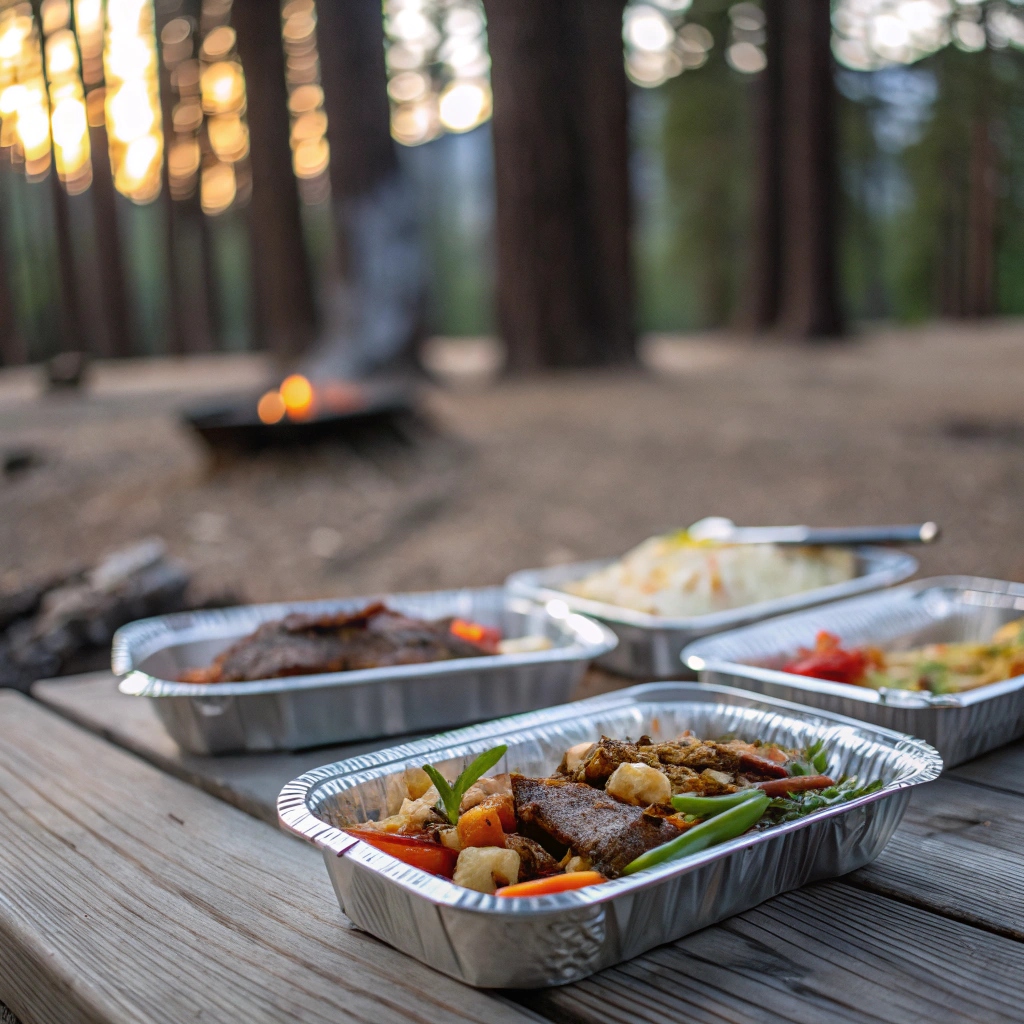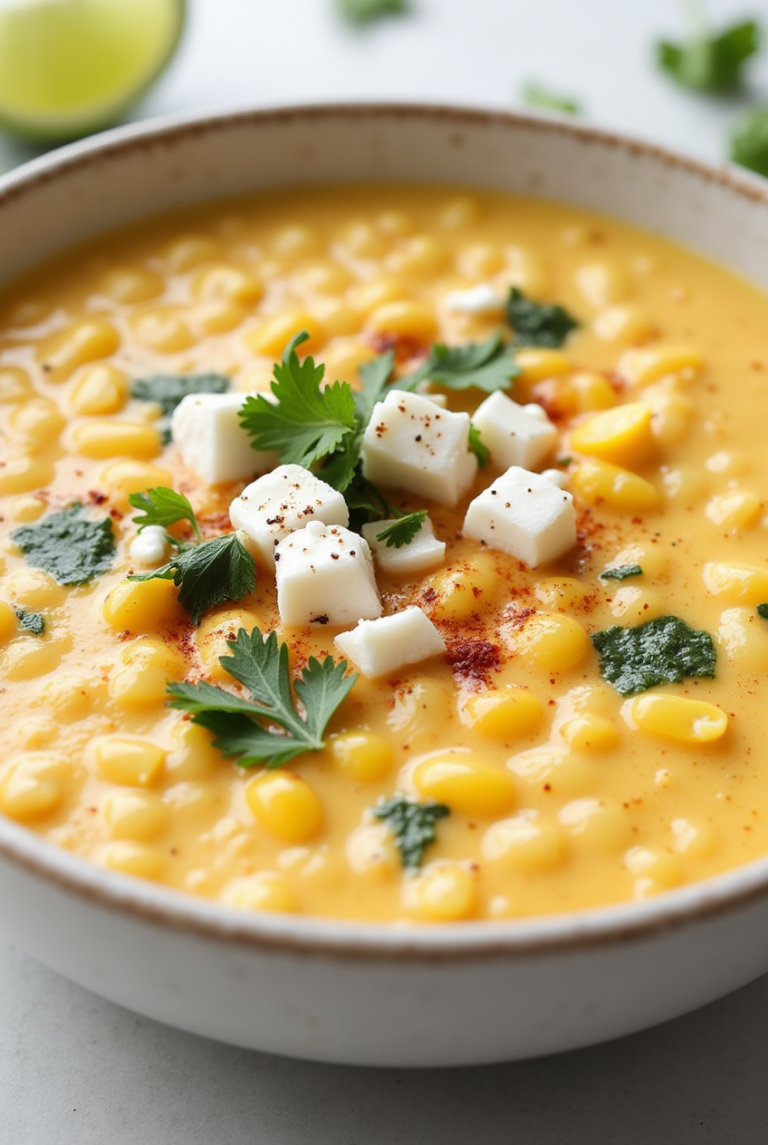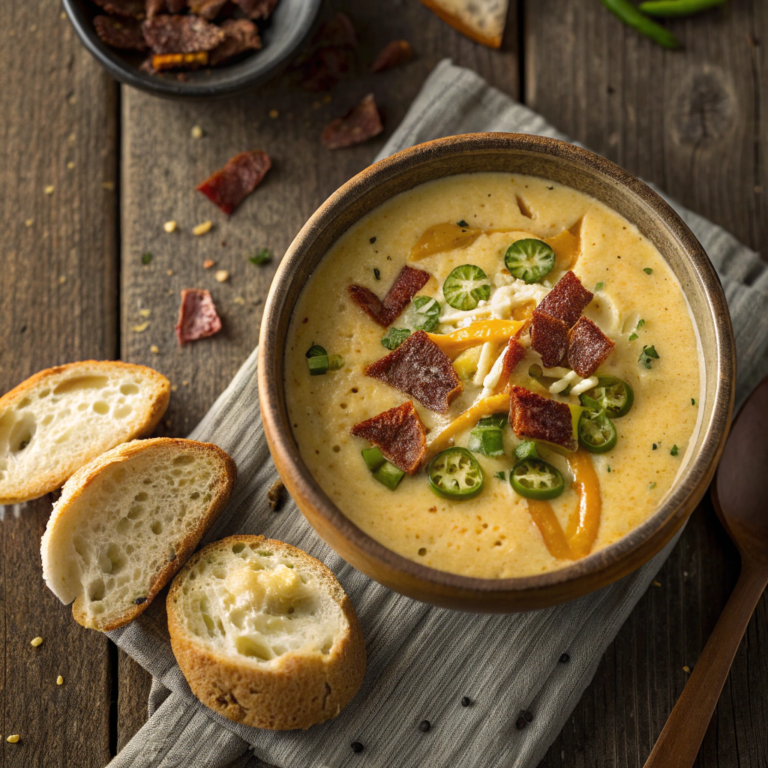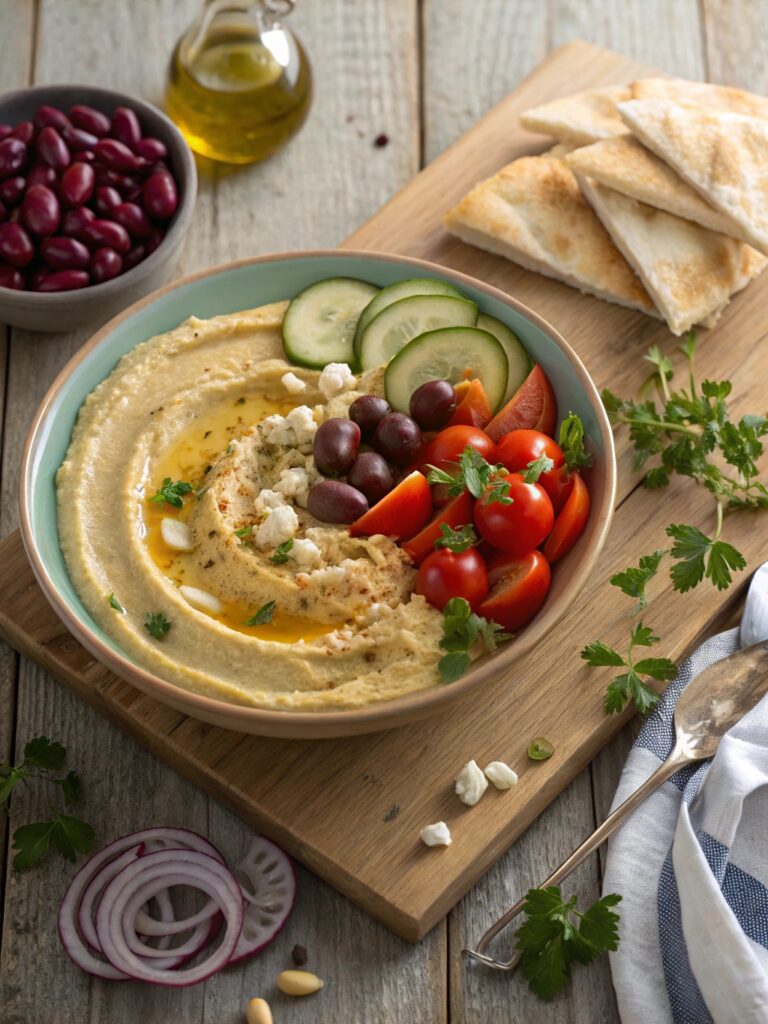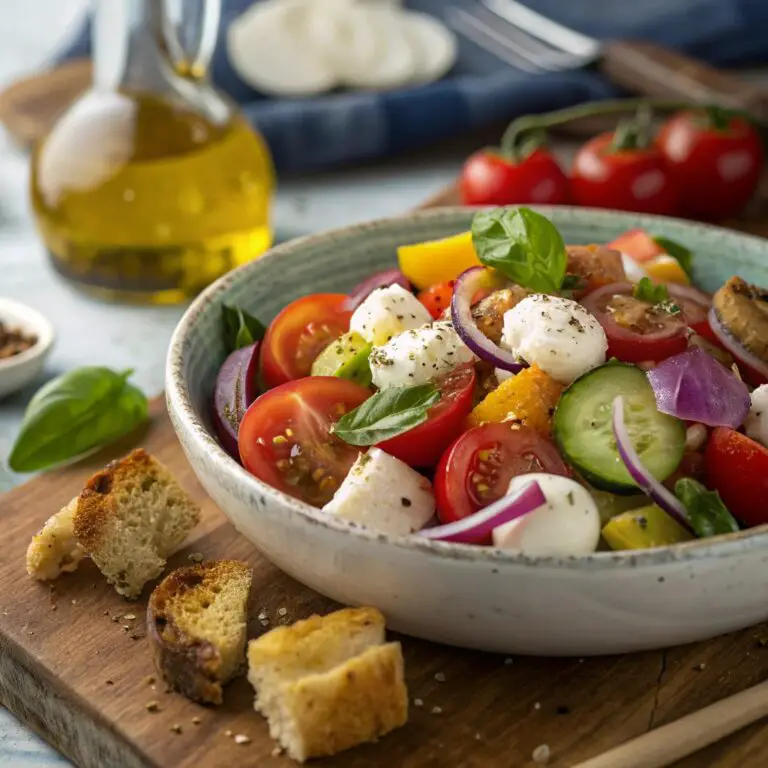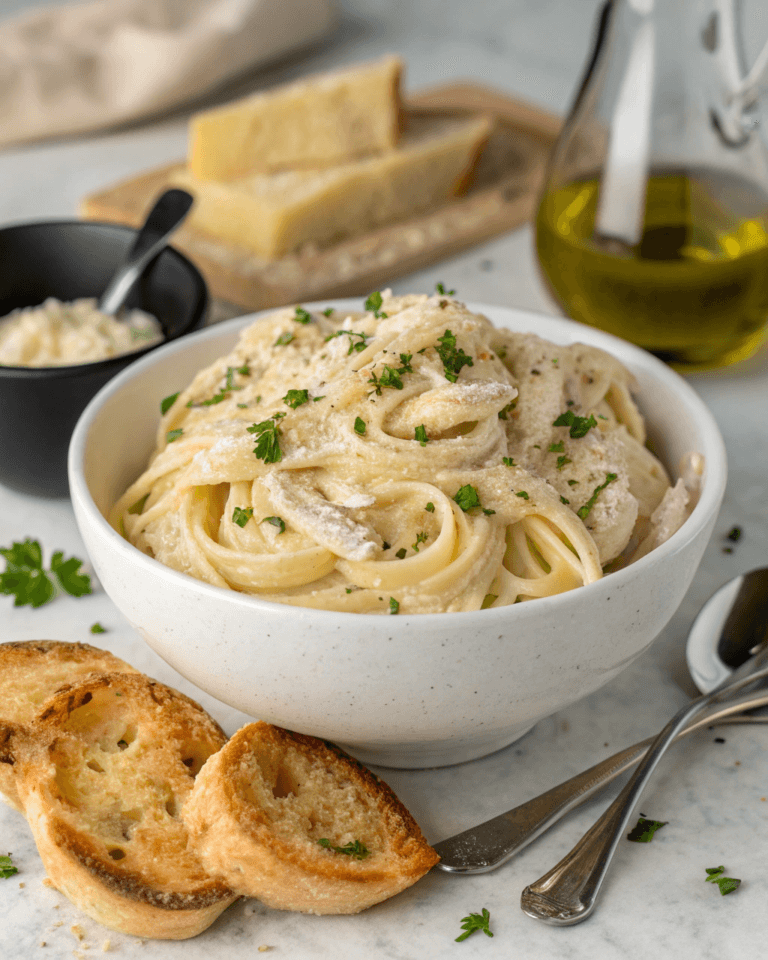Easy Tin Foil Dinner: 8 Ultimate One-Pack Meals
Introduction
Did you know that 65% of campers rank meal preparation as their biggest outdoor cooking challenge? Tin Foil Dinner solutions are revolutionizing how we experience outdoor cooking, combining convenience with delicious results. These brilliant camping recipes eliminate the hassle of packing multiple pots and pans while still delivering mouthwatering meals that satisfy the whole family. Whether you’re a seasoned outdoor enthusiast or planning your first camping trip, these eight ultimate one-pack meals will transform your outdoor dining experience with minimal cleanup and maximum flavor.
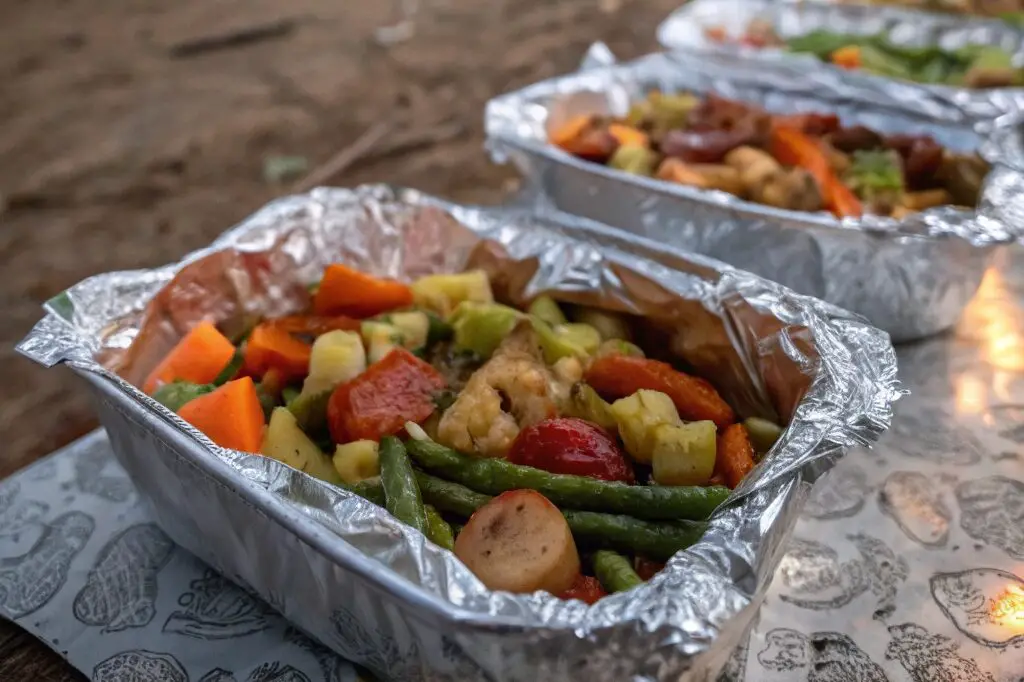
Table of Contents
Why is it Perfect for You?
🔹 Perfect for campers who want to minimize cleanup while maximizing flavor.
🔹 Ideal for families with varied taste preferences, as each packet can be customized.
🔹 Great solution for inexperienced outdoor cooks – virtually foolproof cooking method.
🔹 Excellent for meal prep, packets can be assembled at home before your camping trip.
🔹 Environmentally friendly option that leaves minimal impact on your camping site.
🔹 Adaptable to any heat source – campfire, grill, or even home oven for practice runs.
🔹 Budget-friendly approach, using seasonal ingredients and reducing wasted food.
🔹 Time-efficient cooking method that allows you to enjoy more of your outdoor adventure.
Ingredients List
Creating the perfect Tin Foil Dinner starts with quality ingredients that deliver satisfying results. Each of our eight variations requires:
Basic Packet Components:
- Heavy-duty aluminum foil (18″ sheets work best)
- 1–2 tablespoons olive oil or butter per packet
- Salt and pepper to taste
- Optional: parchment paper lining (for added non-stick protection)
Protein Options (choose one per packet, 4-6 oz per person):
- Lean ground beef patties
- Boneless chicken thighs or breasts, cut into 1-inch pieces
- Salmon or white fish fillets
- Plant-based protein crumbles or tofu chunks (firm, pressed)
- Italian sausage slices
- Shrimp (peeled and detained)
Vegetables (choose 2–3 cups per packet):
- Baby potatoes, thinly sliced
- Carrots, cut into matchsticks
- Bell peppers, chunked
- Zucchini or summer squash, sliced
- Corn kernels (fresh or frozen)
- Cherry tomatoes, halved
- Mushrooms, quartered
- Onions, thinly sliced
Flavor Boosters (choose 1-2 per packet):
- Minced garlic or garlic powder
- Fresh herbs (rosemary, thyme, cilantro)
- Lemon or lime slices
- Soy sauce or Worcestershire sauce
- BBQ sauce, salsa, or pesto
- Cajun seasoning, Italian seasoning, or taco seasoning
Preparation Time and Servings
Preparation Time: 15 minutes
Cooking Time: 20–30 minutes
Total Time: 35–45 minutes
Servings: 4 people
This easy cooking method is approximately 30% faster than traditional camp cooking methods that require multiple pots and pans. The best part? While your dinner cooks, you’re free to enjoy the campsite rather than standing over a stove.
Step-by-Step Instructions
Step 1: Prepare Your Foil Base
Tear off a piece of heavy-duty aluminum foil approximately 18 inches long, then add a second piece the same size, creating a cross pattern. For extra-heavy packets or longer cooking times, double up the foil. If using parchment paper, place it on top of the foil before adding ingredients.
Step 2: Layer Your Ingredients
Start with ingredients that take longest to cook at the bottom. Place sliced potatoes and root vegetables first, followed by your protein choice, then faster-cooking vegetables on top. This strategic layering ensures even cooking throughout your packet.
Step 3: Add Flavor Enhancers
Drizzle olive oil or place butter pats over your ingredients. Sprinkle with salt, pepper, and your chosen seasonings. Add any liquid flavor boosters like soy sauce or lemon juice (about 1–2 tablespoons per packet).
Step 4: Seal Your Packet Properly
Bring the long edges of the foil together above the food. Fold these edges over each other at least three times, creating a tight seal. Then fold and crimp each end at least twice. Leave some space inside the packet for steam circulation – don’t wrap too tightly against the food.
Step 5: Cook With Confidence
Place packets on hot campfire coals, on a grill approximately 4–6 inches from medium heat, or in a 375°F oven. Cook for 20–30 minutes, depending on your protein choice and vegetable thickness.
Step 6: Open Carefully
Using tongs or heat-resistant gloves, remove packets from heat. Let them rest for 5 minutes, then carefully open the top seam away from your face to avoid steam burns.
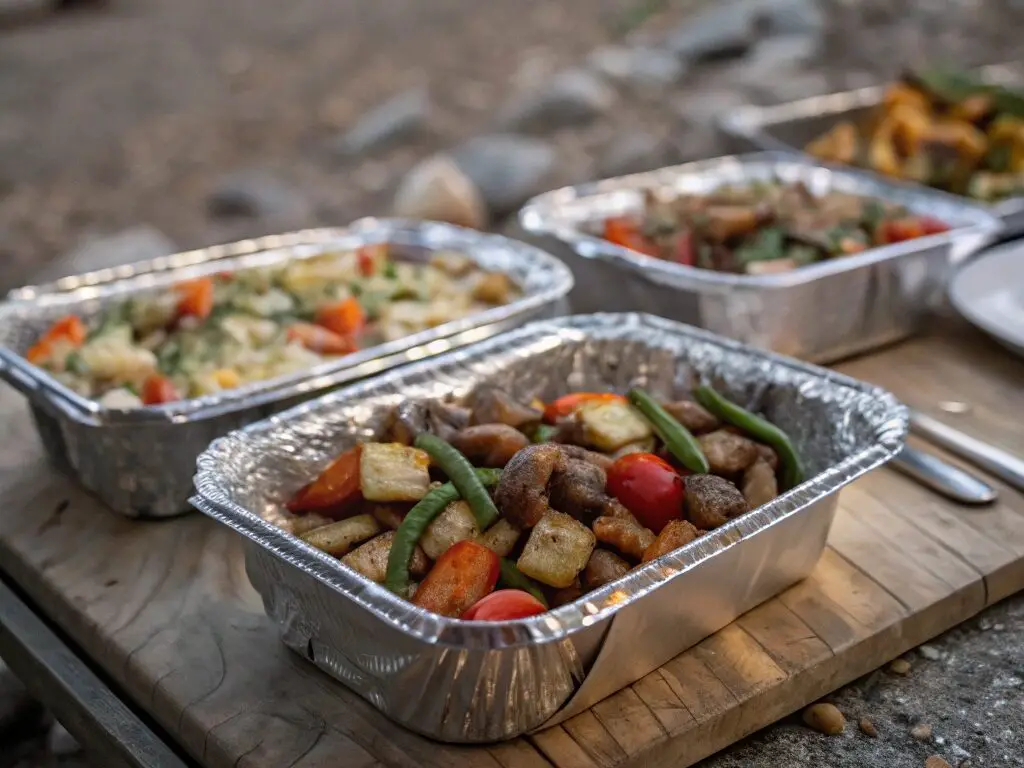
Nutritional Information
Nutritional values vary based on your specific ingredient choices, but a typical Tin Foil Dinner with lean protein and vegetables provides a well-balanced meal with approximately:
- Protein: 25-35g
- Carbohydrates: 20-35g
- Fat: 10-15g
- Fiber: 5-8g
Calories per person
| Packet Type | Calories | Protein | Carbs | Fat |
|---|---|---|---|---|
| Beef & Potato | 450 | 28g | 38g | 18g |
| Chicken & Veggie | 380 | 32g | 25g | 14g |
| Fish & Herb | 320 | 29g | 16g | 15g |
| Vegetarian | 350 | 18g | 42g | 12g |
Healthier Alternatives for the Recipe
Make your Tin Foil Dinner even more nutritious with these simple substitutions:
- Replace butter with heart-healthy olive oil
- Substitute white potatoes with sweet potatoes for more vitamins and fiber
- Use lean ground turkey instead of beef to reduce saturated fat
- Incorporate more colorful vegetables to increase antioxidant intake
- Use reduced-sodium seasonings and sauces to lower salt content
- Add quinoa or brown rice (pre-cooked) for additional whole grains
Serving Suggestions
Take your Tin Foil Dinner to the next level with these inspired serving ideas:
- Garnish with fresh herbs or a squeeze of citrus just before serving
- Serve alongside a simple camp bread or whole grain rolls
- Add a crisp side salad in a separate container for textural contrast
- Include a small container of Greek yogurt or sour cream as a topping
- For dessert, prepare fruit-based foil packets with cinnamon and a touch of honey
- Pack a small bottle of hot sauce or pesto for those who want extra flavor
Common Mistakes to Avoid
🔸 Using regular aluminum foil instead of heavy-duty, which often leads to tears and spills
🔸 Forgetting to oil the foil, causing food to stick during cooking
🔸 Making packets too small, restricting proper steam circulation
🔸 Not sealing packets completely, allowing moisture and flavor to escape
🔸 Placing packets directly on flames rather than hot coals or grill grates
🔸 Cutting vegetables in inconsistent sizes, resulting in uneven cooking
🔸 Opening packets too soon, interrupting the cooking process
🔸 Not bringing heat-resistant gloves or tongs for handling hot packets safely
Storing Tips for the Recipe
Maximize your camping recipes experience with these practical storage tips:
For pre-trip preparation, assemble your packets up to 24 hours in advance and store them in a cooler. Keep raw meat packets separate from vegetable-only packets to prevent cross-contamination.
If you have leftovers (though unlikely!), cool completely, then store sealed packets in a cooler below 40°F. Consume within 24 hours for best quality and food safety. For home preparation, uncooked packets can be frozen for up to 1 month, just add 5–10 minutes to the cooking time when preparing from frozen.
Conclusion
Tin Foil Dinner packets represent the perfect marriage of convenience and culinary satisfaction for outdoor enthusiasts. These eight versatile recipes prove that camping meals don’t need to be boring or labor-intensive. By mastering the simple technique of foil packet cooking, you’ll elevate your outdoor dining experience while minimizing cleanup and maximizing enjoyment of your natural surroundings. Give these recipes a try on your next adventure, and discover why foil packet cooking has become a beloved tradition for campers worldwide.
FAQs
Can I make tin foil dinners at home in my oven?
Yes! Prepare them exactly the same way and bake at 375°F for 20–30 minutes depending on your ingredients.
How do I prevent my foil packets from burning?
Use double layers of heavy-duty foil, avoid direct flames, and place packets on hot coals or a grill grate.
Can I prepare tin foil dinners for vegetarians?
Absolutely! Use plant-based proteins like tofu, tempeh, or beans, paired with hearty vegetables.
How do I know when my tin foil dinner is done cooking?
Carefully open one packet to check that proteins have reached safe temperatures (165°F for chicken, 145°F for fish) and vegetables are tender.
Can children help prepare tin foil dinners?
Yes! Let them choose their ingredients and assemble their own packets—a great way to get picky eaters involved.
Contact Us
Contact us at [email protected], and we’ll get back to you as soon as possible.
Share your experience with us
OOLALA
This turned out so awesome they look like they came from a exspensive bakery.
Just a question
So what about the grease from the meat? Should I use the leanest meats or is the grease give more flavor.
What about a meatloaf on top of veggies ? Would that work?
Ingredients list good, directions lacking
There were great details on quantities of ingredients I should use, but the recipe didn’t tell me the cook time. Also, mentioned in the section about “common mistakes” that you need to let it chill enough but doesn’t direct you in the recipe that you need to let it chill. More details would be helpful
Dressing is perfect!
Not a big fan of mayo, loved the Greek yogurt swap. Reduced garlic a bit. Dressing was delish!
Best coffee cake- ever!!
This recipe was not the easiest to follow due to how it was written. It requires a lot of back and forth from instructions to the lists of ingredients but oh, hey, the end result is totally worth the effort! Mouthwatering and delicious plus it’s a pretty presentation.

